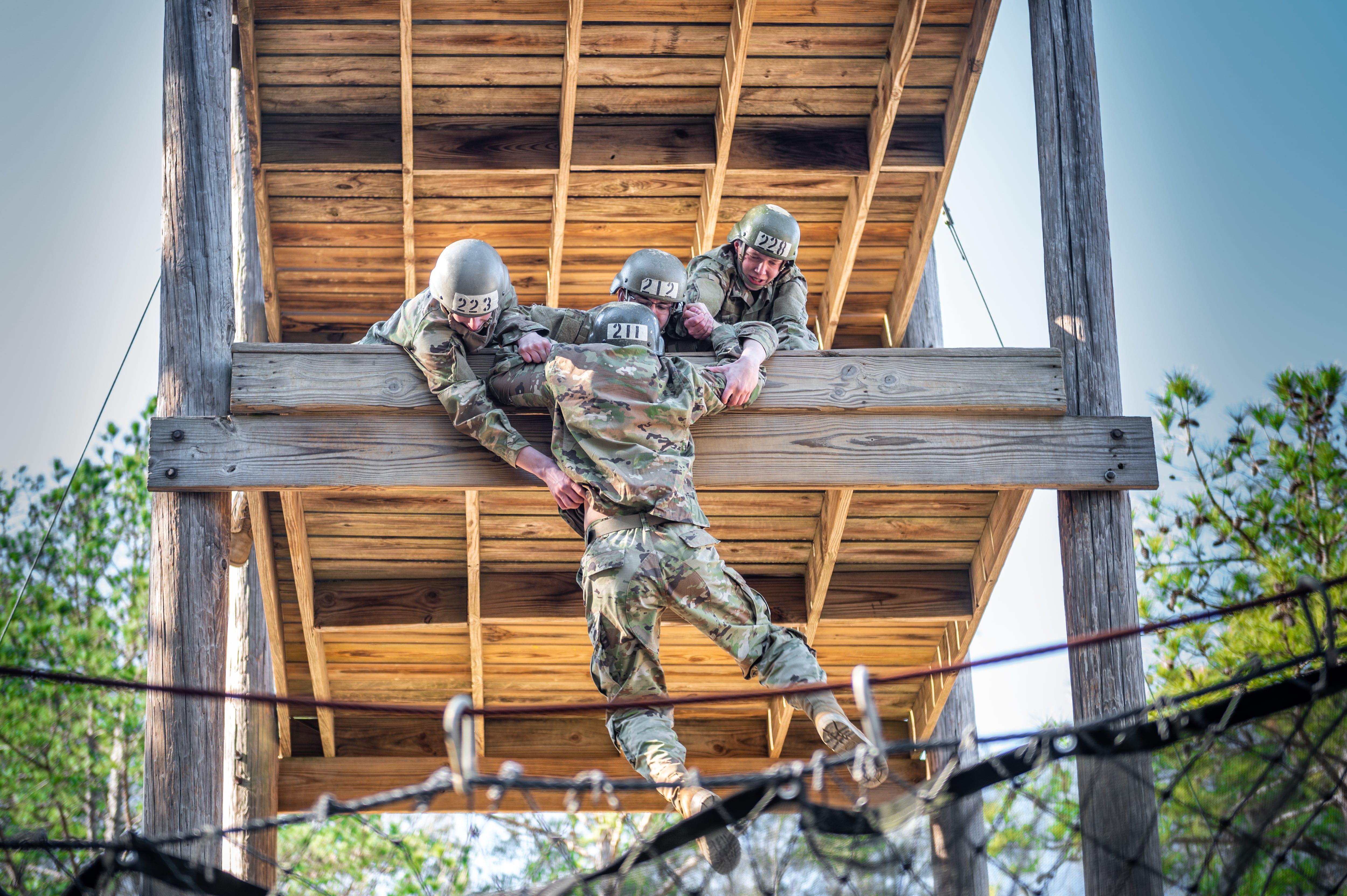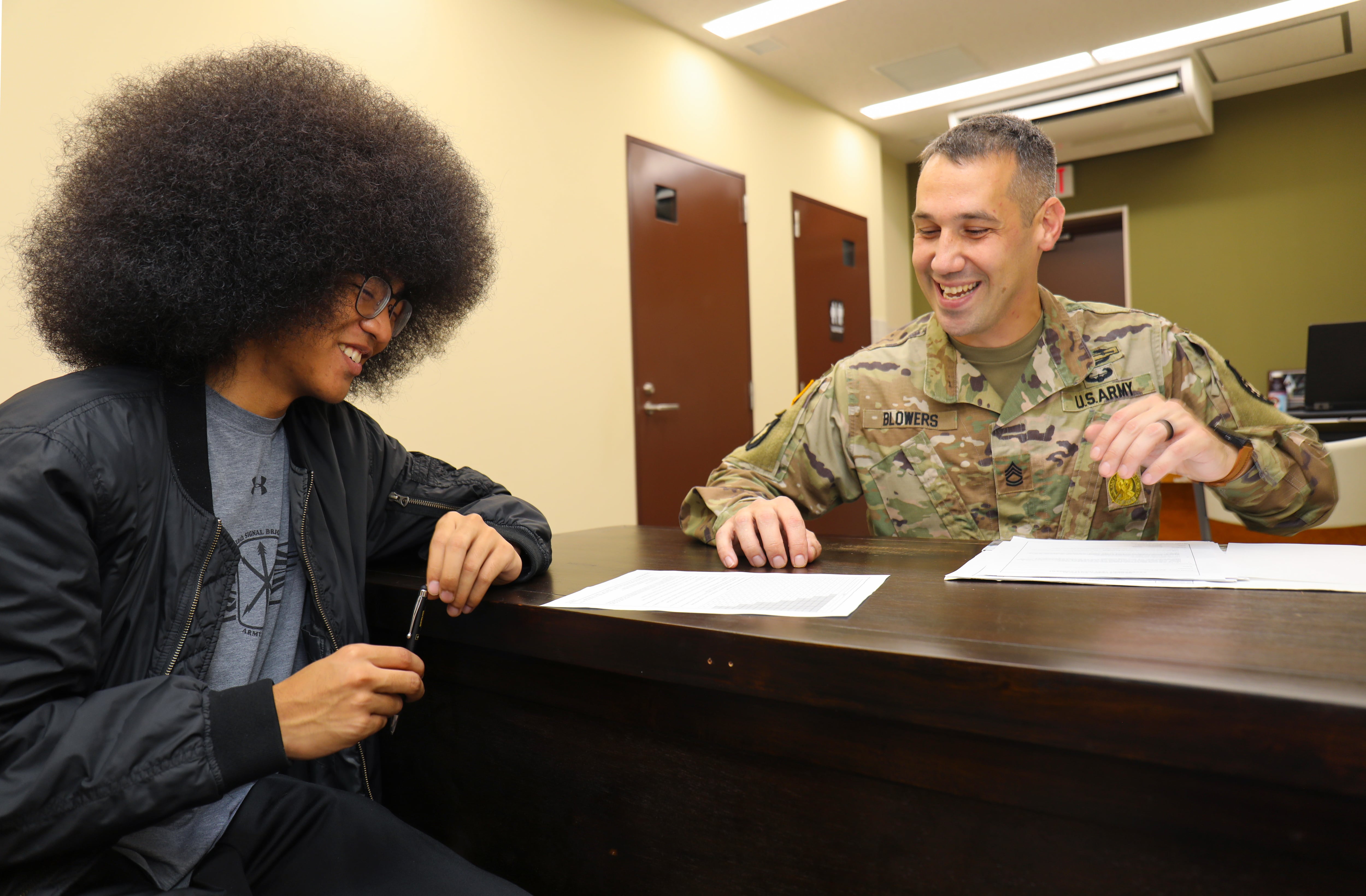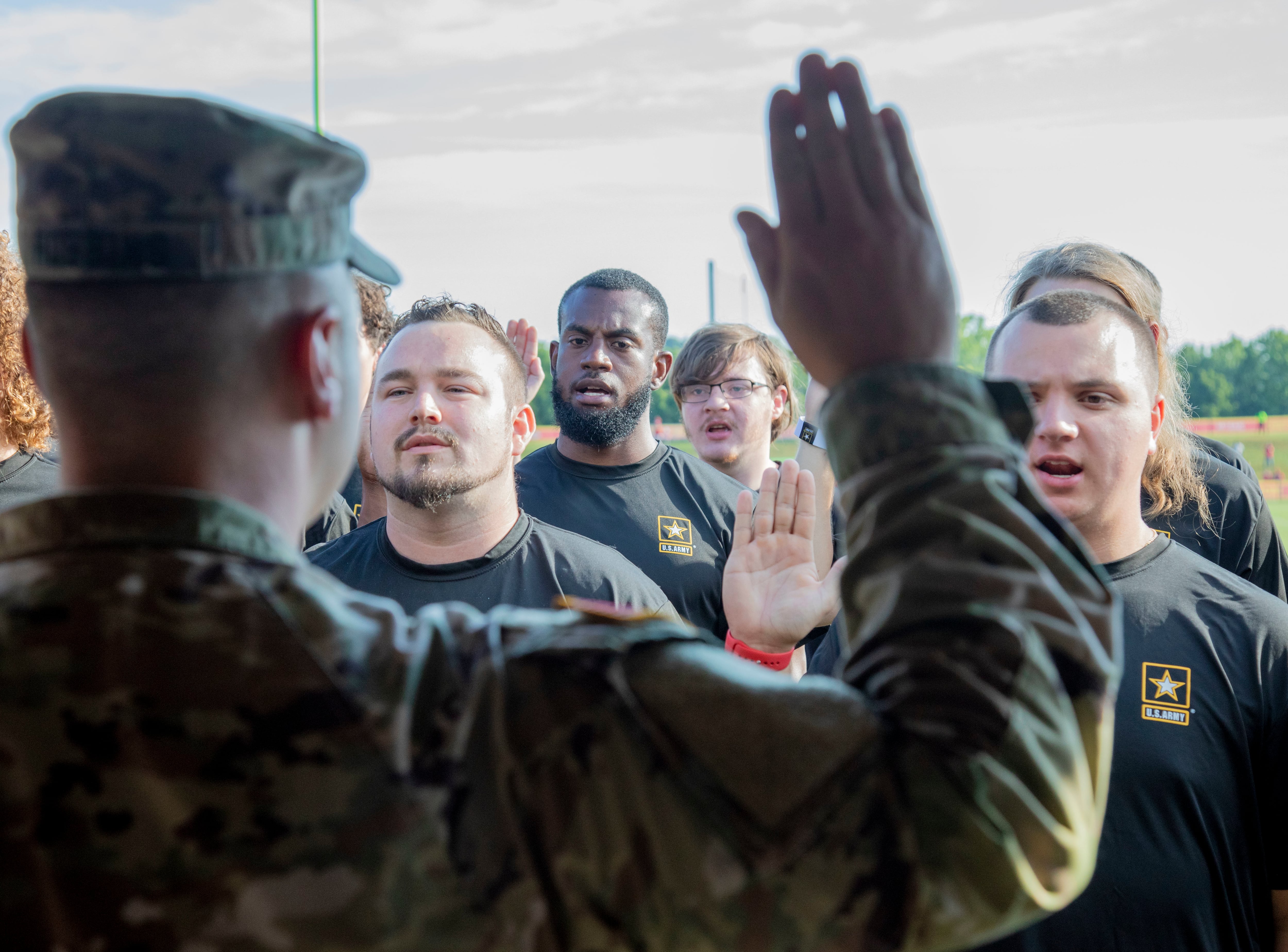The Army’s second-in-command for all things training said Thursday that the service saw a 10% drop in aptitude test scores during the pandemic, and that dipped further to 13% this year. Other Army data showed that up to 70% of potential recruits interested in Army service are disqualified in the first 48 hours due to obesity, low test scores or drug use.
Previously, that disqualification rate was between 30-40%.
The challenges are big — more of the recruits can’t meet weight standards or academic standards, more are using illegal drugs or military-banned substances such as cannabis, and few know much about the Army. And what they do know isn’t flattering.
The Army will not meet its end strength goal for this fiscal year, which ends this month.
On Thursday, the final day of the Maneuver Warfighter Conference at Fort Benning, Georgia, Lt. Gen. Maria Gervais, deputy commanding general of Army Training and Doctrine Command, shared both challenges and ideas to improve recruiting and retention.
RELATED

Army Times has reported extensively on recruiting challenges and new programs, including a pilot program that takes on otherwise unqualified recruits for up to 90 days before basic training.
Those recruits work on disqualifying factors like body fat percentage and test scores.
The Army has been in a “nosedive” for the past 14 months, Gervais admitted. But the aircraft is making a steady climb, she assured the audience of more than 300 soldiers.
Though the service met its end strength goals last year, that was driven by overachievement on the retention side.
The formula for hitting end strength goals lies in recruiting, retention and lowering attrition, she said. Retention rose in recent years and attrition dropped but may rise again.

Maj. Gen. John Kline, commander of the Army’s Center for Initial Military Training, said attrition dropped by nearly half between 2019 and 2021.
The Army lost 13,800 soldiers to a variety of causes in 2019. That dipped in 2020 and plummeted to 7,000 last year. Rates decreased from 11.2% in 2020 to 8% in 2021.
Gervais noted that, in recent years, Army data shows a 10% drop in overall Armed Services Vocational Aptitude Battery test scores. That deepened to 13% with the most recent high school graduating class, she said.
Possibly contributing to future woes are drops in reading and math among grade schools, recently reported by the Wall Street Journal showing some of the lowest scores in decades.
Gervais noted the report and her own concern for future academic strains on the population the Army will need to recruit.
Secretary of the Army Christine Wormuth recently established a Recruiting and Retention Task Force to address the end strength deficit. Most of that work happens at Fort Jackson, South Carolina.
“There is some concern about what I would call psychological harms, there are parents who see headlines about suicide in the military or see headlines about sexual assault or harassment in the military,” Wormuth said in remarks on Tuesday, the first day of the conference.
She encouraged soldiers to boost the Army themselves, by ensuring they reach out to the community and have healthy, safe working environments in the units they lead.

“It is in part because of that, some of the perceptions that some Americans have about what their kids might encounter in the Army, it is incredibly important that all of you as young leaders are really doing everything you can to set a positive command climate and making sure that you are doing your part to reduce harmful behaviors in the formation,” she said.
One thing the new task force did was pull 70 of the Army’s top recruiters to take the pulse of what they’re seeing and learn from their successes, said TRADOC Command Sgt. Maj. Daniel Hendrex.
The sergeant major pointed to some numbers that might, at first, confuse an observer.
Each year an estimated 110,000 individuals meet recruiters with an interest in joining the Army, he said. That number hasn’t changed substantially. What has changed is the disqualification rates, he said.
Before the COVID-19 pandemic, between 30% and 40% of those interested in joining were disqualified for service for several reasons. Since COVID, that rate has increased to nearly 70% in the first 48 hours of screening, he said.
Obesity, drug use and poor academics drove most of the disqualifications, he said. Drug use is a growing concern.
Three dozen or more states have decriminalized, legalized or lowered barriers for marijuana use. That is something the Army will need to factor into future recruiting considerations.
But, Hendrex said, disqualification, while troubling, isn’t the only factor. A major problem, Army research has shown, is unfamiliarity with what the Army does.
Fewer Americans have a relative in the military or live near a base. And younger Americans rely on their peers and their own news sources to learn.
“Name your platform, the Army’s not there and the things being said about the Army are not positive at all,” Hendrex said.
Possibly counterintuitive, but the trusted source remains a young person’s parents, research shows. But, like most of America, Hendrex said, many parents only know the negatives about military service — post-9/11 war drain, amputations, Traumatic Brain Injury, Post Traumatic Stress Disorder and ongoing reports of sexual assault.
Kris Fuhr, an Army veteran turned expert who has worked on multiple commissions including the Independent Review Commission on Sexual Assault, noted a stark change after one high-profile incident.
She said that parental support for military service dropped dramatically, more so for parents than soldiers themselves, on the Joint Advertising Market Research and Studies, a Pentagon report that surveys personnel.
Maj. Gen. Johnny Davis is transferring from heading Cadet Command to take over Army Recruiting Command in the coming week.
Davis, on the panel, posed his own, early question: is six weeks of recruiter training enough and are they covering the right areas, the right skills?
The two-star said that recruiter training would be examined for ways to improve.

One area that Davis, Hendrex and others pointed to were Junior Reserve Officer Training programs. The high school program is small. Only about 5% of all schools have a dedicated JROTC.
But the statistics look good, they said. Nearly half of JROTC cadets join the military, either officer or enlisted. On average, programs show higher high school and college graduation rates.
Davis cautioned that his idea had not yet been approved but he would like to push for 50 new JROTC programs each year over the next five years.
Those 250 new programs would place 300,000 high school students in what he termed a “civics” program that would help expose them to the military.
Todd South has written about crime, courts, government and the military for multiple publications since 2004 and was named a 2014 Pulitzer finalist for a co-written project on witness intimidation. Todd is a Marine veteran of the Iraq War.





